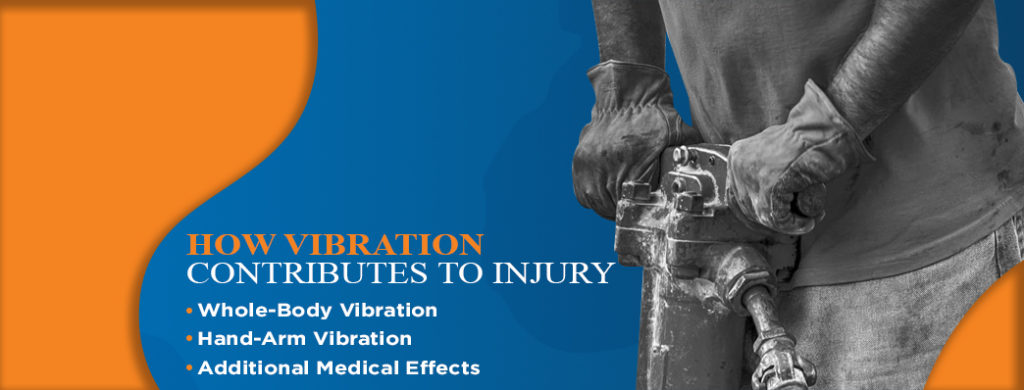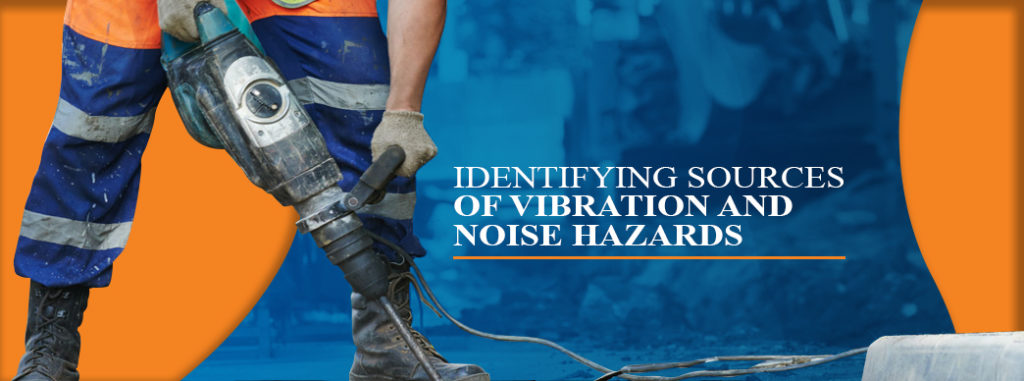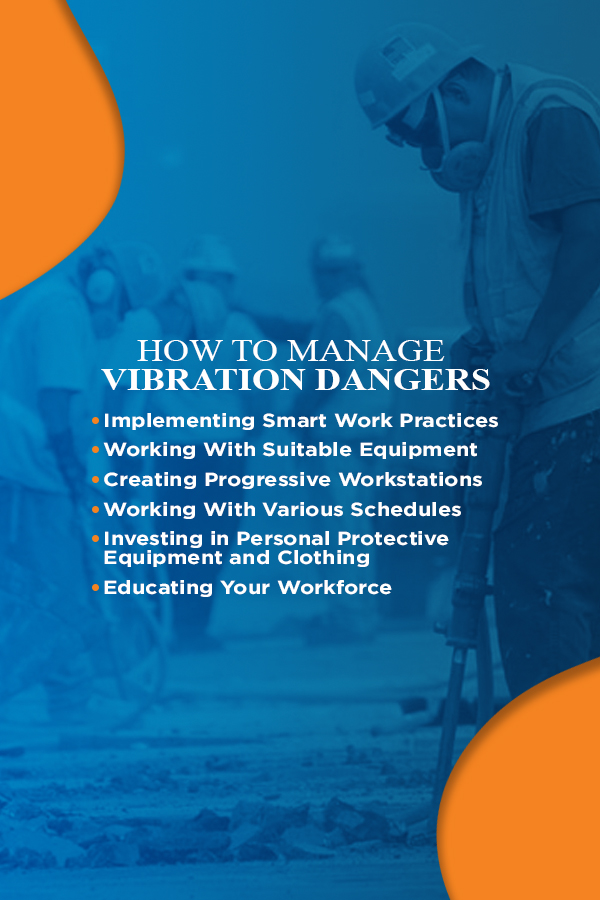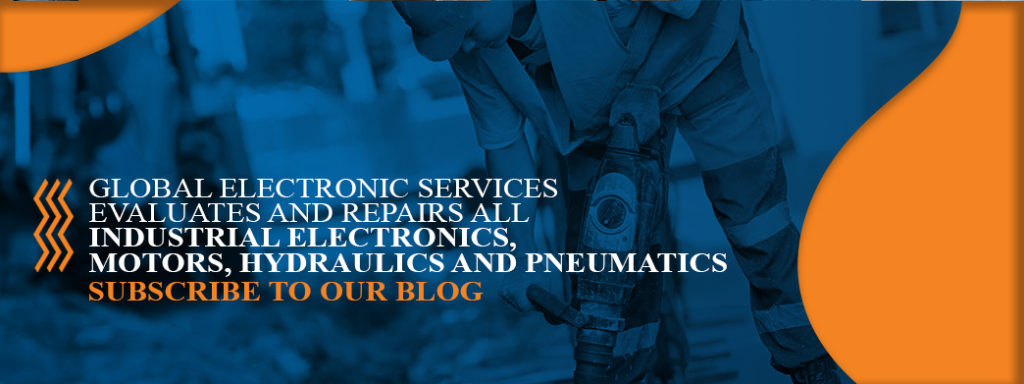Vibration Hazards and Control Measures

Vibration isn’t always a visible problem within the workforce. Dangers such as chemicals, fires and electrical damage may be at the forefront of safety concerns, but vibration hazards and control measures need to be more of a priority. Injuries from repeated movements can be progressive and permanent but also preventable if you take mindful steps.
Industries ranging from manufacturing, storage, construction and mining to transportation, agriculture, fishing, forestry and automobile production are affected by various vibration levels. Vibrations associated with tools, machines and vehicles can include forklifts, mining machinery, logging equipment, off-road haulers, paving machines, factories, buildings, workshops and more.
This post addresses particular vibration hazards as well as how your company can implement preventative measures to keep your workers safe.
How Vibration Contributes to Injury

According to the Health and Safety Authority, the vibration hazards concern a rapid oscillating or back and forth movement. Vibrations found within your company’s operations can expose your employees to two types of serious conditions — whole-body and hand-arm vibration.
1. Whole-Body Vibration
Whole-body vibration, or WBV, can be a source of numerous health effects such as:
- Affected balance
- Bone damage
- Digestive illnesses
- Heart conditions
- Impaired vision
- Lower back pain
- Metabolic, respiratory or endocrine changes
- Motion sickness
- Reproductive organ damage
- Varicose veins
As suggested, whole-body vibration affects the entire body. WBV results from improperly designed or maintained machines, vehicles, platforms, tools and other technologies. With an excessive force pulsating through a body, it can lead to extreme forms of pain. WBV is also a pervasive cause of downtime in companies that creates a loss in production output. The more exposure your personnel has to vibration, the higher the risk they will have of obtaining a muscular or health ailment.
2. Hand-Arm Vibration
Hand-arm vibration, or HAV, stems from long-term use of hand tools including chain saws, weed whackers, pneumatic tools and grinders. Possible conditions include:
- Carpel tunnel
- Direct injury to arms, hands and fingers
- Ergonomic-related injuries
- Muscle and joint impairment
- Sensory nerve damage
- White or dead finger
White finger is damage to the hands that causes whiteness and irritation in the extremities. Extreme cases can even result in the amputation of fingers. HAV can affect your staffs’ grip, feeling and ability to operate different tools and machines.
Both whole-body and hand-arm vibration disorders are debilitating and can permanently disable workers in your company. However, permanent damage depends on the following:
- Length of exposure
- The frequency of use, measured in vibrations per second
- Amplitude, which is the size of the vibration measured in distance, speed and acceleration
3. Additional Medical Effects
Repeated exposure and high levels of vibration can affect your employees based on how the exposure relates to the work environment and other factors. For example, one symptom of excessive vibration is localized disruption of the vascular and nervous system in the hands and arms. Fluctuations can disrupt various functions in the body’s extremities such as muscle control, the distribution of oxygen and nutrition and sensory output.
Another ailment caused by vibrations includes a decrease in blood flow to the extremities. With less blood reaching your hands and fingers, your body becomes less effective in moving oxygen and nutrients to particular cells. As a result, the cells and tissues can die — most often with nerve cells being the first to go. Nerve cells allow us to touch and feel, giving your operators immense sensitivity, grip and exact control over devices.
Identifying Sources of Vibration and Noise Hazards

You may not see any potential noise and vibration hazards at first glimpse at your facility. However, even the most unnoticeable vibrations can be a cause of pain for your employees down the road. Being aware of vibrating equipment will keep your workers informed and safe as well as reduce the possibility of downtime.
Any tool, machine or form of technology that vibrates needs to be identified, ranging from sanders, pavement breakers, grinders, chipping hammers, air-powered wrenches and saws to impact drills, dental tools, conveyor belts, semi-trucks and even computer hard drives. Any vibrating object can debilitate someone’s whole body, hands or arms after repeated use.
Other factors that contribute and relate to vibration injuries include:
- Working in cold and damp conditions
- Poor tool maintenance
- Tobacco use
Cold environments stiffen the body’s joints and muscles, which can cause more harm when operating vibrating equipment. Neglecting to maintain tools, machines and vehicles can increase pulsations and how the technology is designed to reduce such movements. Finally, nicotine is a vasoconstrictor that decreases blood circulation in a person’s extremities.
Smoking can increase the risk of HAV. People can suffer from tingling sensations in their hands and fingers, experience the whitening of fingertips and have pain or numbness after they clock off for the day. Any of these conditions may mean they are experiencing excessive risk and onset injury.
According to the National Safety Council, approximately 2 million people were exposed to HAV, and about 1 million workers were at risk for developing symptoms in 2015. The percentage of your workers who are affected depends on the tools your company works with and the type of labor your employees conduct.
Identifying risks is possible by estimating the level of vibration in your workplace. The time of exposure and magnitude of vibration and crucial in defining hazards. Your corporation can even conduct an inventory audit of tools on site to determine the sources of harmful fluctuations. Studying tool use can give you time exposure estimates.
The Manufacturer’s Directives by the European Union makes suppliers disclose vibration emissions of tools to help give businesses an idea of whether equipment poses risks. Each baseline centers on new conditioned tools. Once any piece of machinery becomes mishandled, abused or worn out, vibration can increase as much as two times.
The Exposure Model
To keep your company healthy and productive, understanding the effects of vibration exposure on your workers is critical. It requires the measurement of vibration acceleration in meters per second squared (m/s2). The direction of the pulsations is also critical, measurable in separate paths. How hard your team members grip tools relates to the amount of vibrational energy pulsating through their hands — also known as hand grip. Your business can even go further to calculate the frequencies and duration of vibration exposure.
Although the United States does not uphold any regulations against vibration exposure levels, consensus standards within the industry exist. For example, the exposure limit value (ELV) is the maximum amount of vibration a person can be exposed to during one day. For HAV, it’s 5 m/s2. Then, the exposure action value (EAV) is the amount of vibration exposure above which people should take action to control it. The EAV is 2.5 m/s2 for hand-arm vibration.
Pinpointing vibration exposures within your company can help keep your staff healthy and productive. Any comparisons made within the model are based on new tools and equipment. If vibration levels, when a device is in operation, are more than 2.5 m/s2 for EAV and more than 5 m/s2 for ELV during eight hours, vibration exposure is too high.
You can calculate the exposure by evaluating the following:
- Take the average time of task completed each day and estimate the expected vibration contribution — or exposure points
- Measure the exposure points for all the tools and models
- Sum the calculations together and compare to harmful levels
Here are more details on how to perform an exposure model with a hand-arm exposure calculator and whole-body exposure calculator. After the calculations, the levels may be above the recommended daily limits. If so, invest in a vibration monitor that measures human vibration, making sure it meets ISO 8041 performance standards. Consider its placement, orientation and mounting along with the setup of the vibration accelerometer instrument.
Because the exposure model takes a significant amount of time to study and research, your company may want to consider working with a professional consultant.
How to Manage Vibration Dangers

If you want to take control of the vibration issues found within your workplace, it will take a combination of improved features such as:
- Work practices
- Proper tools
- Advanced workspaces
- Alternating schedules
- Vibration-absorbing materials
- Employee education
Taking steps to reduce or eliminate vibrations all together means your company must concentrate its efforts on controlling the risks and eliminating aspects that you can do without. If there is any exposure above the exposure action value, it’s wise to look for alternative methods as opposed to subjecting your staff to potential ailments. Concerning less harmful vibrations, establish a planned vibration control program and encourage good practice within your firm.
1. Implementing Smart Work Practices
For your staff to avoid hand-arm vibration syndrome and other discomforts, they can employ a few healthy practices such as:
- Using a minimum force hand grip when handling tools while maintaining safe operation of the device or machine
- Avoiding continuous use and exposure
- Taking rests when necessary
- Placing tool on a workbench when possible instead of vibrating in the hand
- Eliminating the use of faulty tools
- Maintaining tools when they become worn, unaligned or blunt to avoid an increase in vibration
- Applying alternatives that eliminate or shrink vibration exposure
- Automating the work instead of using the body
Always encourage your workers to seek medical attention from a doctor when signs of vibration disease appear or worsen.
2. Working With Suitable Equipment
Ensuring all tools, machines and vehicles are suitable for specific tasks is the first step in providing safe equipment. Unsuitable technology can make a job take longer to complete and more challenging to perform, making the body more exposed than necessary to constant vibrations. Regular maintenance is also essential to avoid increases in vibration. Use the highest standards in the industry when maintaining machines, replace shock absorbers when necessary and always repair or replace damaged tools.
After analyzing your devices, some may need replacing. Invest in the lowest vibration options on the market and buy new equipment often. Anti-vibration tools, such as chain saws and pneumatic technology like chipping hammers, riveting guns and pavement breakers have unique designs that dampen massive movements. And while the right tool makes a substantial difference, it also matters how it’s mounted.
3. Creating Progressive Workstations
Once your workers have the best tools on hand, advancing work areas can minimize loads on an operator’s arms, wrists and hands. Make sure to improve the design of each workstation to minimize poor posture and help team members diminish the need to grip tools too tightly by installing suspension systems. It’s all about creating an ergonomic workstation for easy-flowing tasks that allow employees to remain productive and energized.
4. Working With Various Schedules
Sometimes it’s impossible to design tools that don’t vibrate or produce lower levels of movement that still perform their intended tasks. Therefore, if you can’t alter the machine, change the exposure time. Consider job rotation and allow frequent breaks to give operators a rest. The best thing you can do is to make your staff’s health a priority. Short and recurrent breaks are more productive in the long run as opposed to fewer breaks and an increase in vibration pain.
5. Investing in Personal Protective Equipment and Clothing
Providing the gear your people need to succeed can make the difference between downtime and productivity as well as their symptoms and well-being. To start, maintain a steady temperature level and provide gloves to keep their hands warm. Working in a warm and dry environment promotes blood circulation and helps prevent white finger.
Protective attire such as anti-vibration gloves can prevent vibrations from transferring to an operator’s hands. Conventional gloves do little to protect the body’s extremities, so swap cotton, leather and other gloves for anti-vibration options made of viscoelastic material.
6. Educating Your Workforce
Training programs can help heighten awareness of HAV and WBV. The class can include proper use and maintenance of tools and other technologies that are prone to high accelerations of vibration. Teach employees to avoid unnecessary exposure times as well as noise control education. Show workers the proper operating techniques, the best grip force for various tools and encourage them to speak up and seek help when they feel injuries occurring.
Explain how they can inform managers when tools, machines and vehicles are down or damaged to help avoid long-term risks.
Global Electronic Services Evaluates and Repairs All Industrial Electronics, Motors, Hydraulics and Pneumatics

When your tools begin to increase in vibration levels or become damaged, keep your workers at the forefront of safety and refer to our certified technicians. We evaluate your situation and make repairs within one to five days to decrease your company’s downtime. Call Global Electronic Services at 877-249-1701 or subscribe to our blog to learn about the latest manufacturing updates and news.